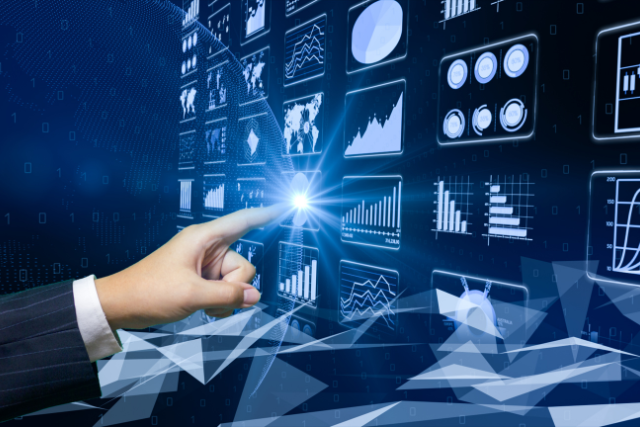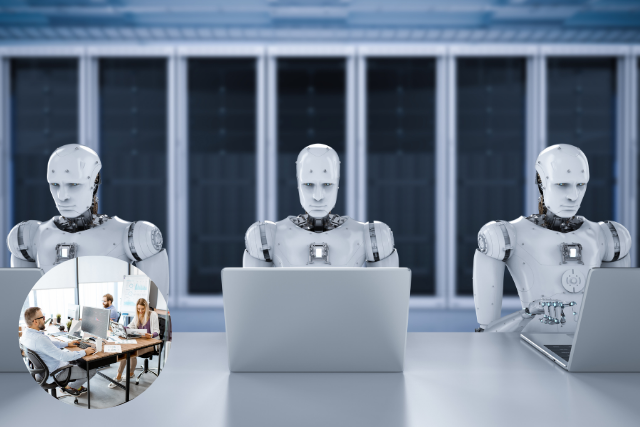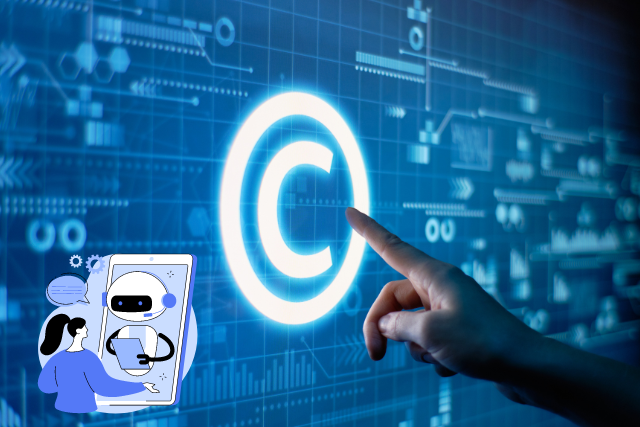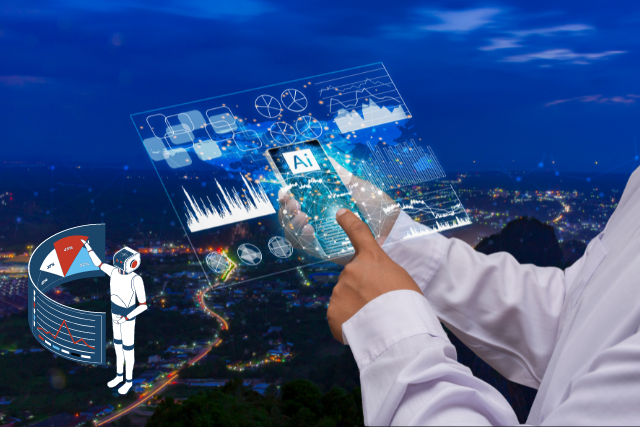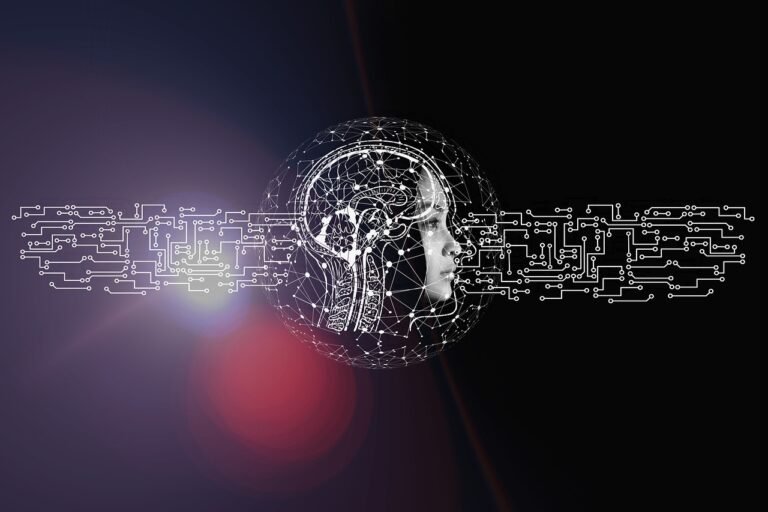Generative AI refers to artificial intelligence (AI) that can create new, original content, such as text, images, music, or videos, rather than simply processing or analyzing existing data.
Generative AI models are trained on large datasets and use algorithms to learn patterns and relationships within the data. This allows them to generate new content that is similar in style, tone, and quality to the training data.
Applications of Generative AI Across Various Industries
1. Content Creation
Generative AI can generate high-quality content, such as blog posts, articles, social media posts, and even entire books. This technology can help content creators produce more material in less time, maintaining a consistent style and tone that matches the brand or individual preferences.
AI-powered tools like GPT-4 can write detailed articles on various topics, enhancing the productivity of bloggers, journalists, and content marketers.
2. Art and Design
Generative AI can create original artwork, music, and designs in art and design. For instance, AI can generate new characters, landscapes, or objects, providing designers with unique ideas and inspiration that might not have been possible through traditional methods.
Tools like DALL-E and DeepArt are examples of AI models that can transform textual descriptions into visually stunning artworks, pushing the boundaries of human creativity.
3. Advertising and Marketing
Generative AI can play a significant role in advertising and marketing by creating personalized ads, product descriptions, and marketing materials.
This can lead to more effective marketing strategies, as the content generated can be tailored to the preferences and behaviours of individual consumers.
AI-driven platforms like Persado use generative AI to craft compelling marketing messages that resonate with target audiences, optimizing conversion rates and ROI.
4. Healthcare
Generative AI can develop personalized treatment plans, medical images, and medical records in healthcare. This can enhance patient care by providing tailored medical solutions based on a comprehensive analysis of individual patient data.
For example, AI models can generate synthetic medical images that help train radiologists and improve diagnostic accuracy, thereby advancing medical research and clinical practices.
5. Finance
The finance industry can benefit from generative AI by creating personalized financial reports, forecasts, and investment strategies. AI can analyze vast amounts of economic data to generate accurate and reliable reports, aiding in better decision-making for investors and financial analysts.
Robo-advisors like Betterment and Wealthfront utilize generative AI to provide customized investment advice, helping users achieve their financial goals efficiently.
Examples of Generative AI
1. Language Models
Generative language models, such as those used in chatbots, can generate human-like text responses to user input. These models can be used in customer service, virtual assistants, and other applications where natural language interaction is crucial.
ChatGPT, for instance, is a language model that can engage in detailed and coherent conversations, enhancing user experiences across various platforms.
2. Image Generators
Generative image models, such as those used in art and design, can create original images like portraits, landscapes, or objects. These models can provide artists and designers with new visual elements and creative possibilities.
GANs (Generative Adversarial Networks) like StyleGAN are renowned for producing highly realistic images and revolutionizing digital art and graphic design.
3. Music Generators
Generative music models, such as those used in production, can compose original music, including melodies, harmonies, or entire songs. Musicians and producers can use these models to explore new sounds and compositions.
AI tools like Amper Music and OpenAI’s MuseNet enable users to create music across different genres and styles, expanding the horizons of musical creativity.
4. Video Generators
Generative video models, such as those used in film and television, can create original video content, including scenes, characters, or entire stories.
This technology can streamline the production process and open up new storytelling opportunities. Companies like RunwayML are pioneering in this space, providing tools that help filmmakers and content creators efficiently produce high-quality video content.
Benefits of Generative AI
1. Increased Efficiency
Generative AI can automate many tasks, freeing human creatives to focus on higher-level tasks. This can lead to more efficient workflows and increased productivity in various industries.
For instance, AI can handle repetitive and time-consuming tasks, such as drafting initial content or creating design prototypes, allowing professionals to concentrate on refining and perfecting their work.
2. Improved Accuracy
Generative AI can generate more accurate and consistent content than human-created content. This can be particularly beneficial in fields where precision and consistency are crucial, such as healthcare and finance.
AI models can minimize human errors and biases, ensuring that the generated content meets the highest standards of quality and reliability.
3. Enhanced Creativity
Generative AI can generate new and innovative ideas that may not have been possible for humans to come up with on their own. This can lead to breakthroughs in art, design, and other creative fields.
By leveraging AI’s ability to analyze vast amounts of data and identify unique patterns, creators can explore uncharted territories and produce groundbreaking work.
4. Personalization
Generative AI can create content tailored to individual users, improving engagement and satisfaction. This level of personalization can enhance user experiences in marketing, entertainment, and other domains.
AI-driven personalization can produce more relevant and appealing content, fostering deeper connections between brands and their audiences.
Ethical and Legal Concerns of Generative AI
1. Copyright and Ownership
Generative AI raises questions about who owns the generated content and the implications for copyright and intellectual property. Determining ownership and rights can be complex, especially when AI-generated content closely resembles existing works.
Clear guidelines and policies are needed to address these issues and protect the interests of all stakeholders involved.
2. Bias and Fairness
Ensuring that generative AI models are fair and unbiased is a significant challenge. These models can inadvertently perpetuate existing biases present in the training data, leading to unfair or discriminatory outcomes.
Continuous monitoring and refinement of AI models and diverse and representative training datasets are essential to mitigate biases and promote fairness.
3. Job Displacement
The rise of generative AI could impact the jobs of human creatives. While AI can enhance productivity, there is a concern about job displacement and the need to develop strategies to mitigate the impact on employment.
Reskilling and upskilling initiatives and a focus on human-AI collaboration can help ensure that workers adapt to the changing landscape.
Conclusion
Generative AI has the potential to revolutionize many industries and create new opportunities for creativity and innovation.
However, it is essential to approach its development and deployment with caution and consideration for the ethical and legal implications.
By addressing these concerns, we can harness the power of generative AI to transform how we create and interact with content, leading to a future filled with endless possibilities.

